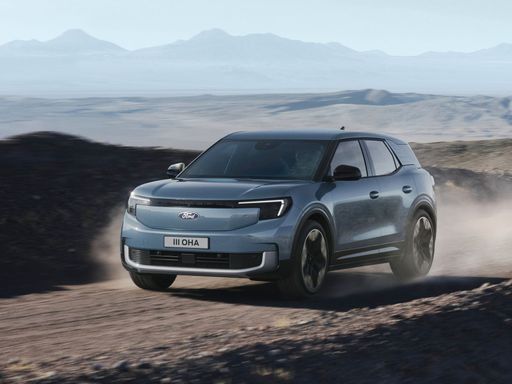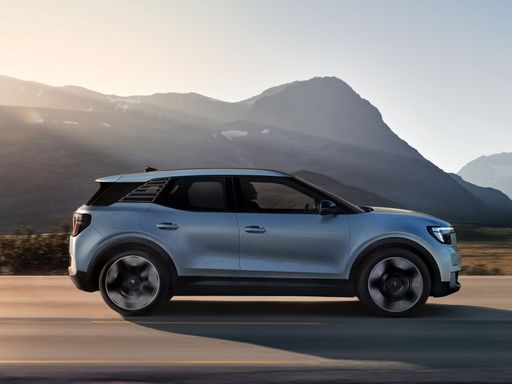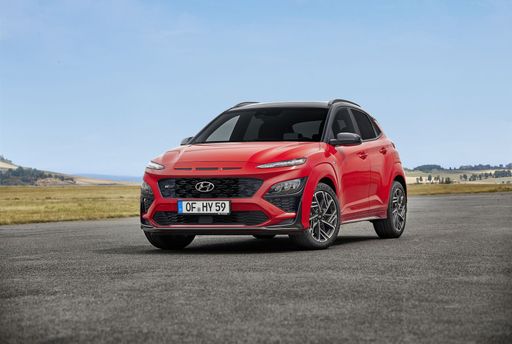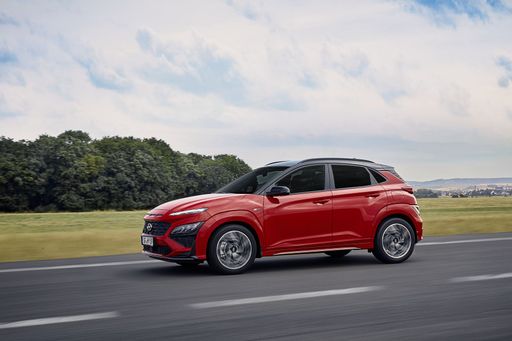Ford Explorer EV vs Hyundai Kona – Kumpi auto sopii sinulle paremmin?
Vertaa suorituskykyä, tavaratilaa, kulutusta ja hintaa yhdellä silmäyksellä.
Ota selvää, kumpi auto on sinulle parempi valinta – Ford Explorer EV vai Hyundai Kona?
Comparative Insights: Ford Explorer EV vs. Hyundai Kona
As the automotive industry accelerates toward electrification, two vehicles stand out in the SUV segment: the Ford Explorer EV and the Hyundai Kona. Representing distinct philosophies in design and performance, both models present significant innovations that cater to evolving consumer preferences. Let’s delve into a comparison highlighting their technical aspects, capabilities, and overall appeal.
Technical Specifications Overview
The Ford Explorer EV is a full-fledged electric SUV offered in multiple configurations, showcasing a maximum power output of up to 340 HP. In contrast, the Hyundai Kona offers a hybrid of powertrains, including petrol, hybrid, and fully electric options with peaks reaching up to 218 HP. While the Explorer focuses exclusively on an electric system, the Kona provides flexibility for buyers wanting traditional fuel options.
Powertrain and Performance
With its electric setup, the Ford Explorer EV delivers impressive torque figures, boasting up to 679 Nm, which translates into swift acceleration from 0 to 100 km/h in just 5.3 seconds for the all-wheel-drive variant. It offers a range up to 602 kilometers on a single charge, making it ideal for long-distance travels.
The Hyundai Kona, though slightly less powerful in its electric form, still impresses with an acceleration time as quick as 7.8 seconds. The fully electric model provides a range of approximately 514 kilometers, ideal for city commuting and light touring. The diverse engine configurations also allow drivers to select the powertrain that aligns best with their needs.
Energy Consumption and Efficiency
When it comes to energy consumption, the Ford Explorer EV is designed with efficiency in mind, recording figures as low as 13.9 kWh/100 km. Its CO2 efficiency class rating of A underlines its eco-friendly credentials.
On the other hand, the Kona presents a mix of efficiency ratings depending on the engine choice. The all-electric variant has a consumption rate close to 14.6 kWh/100 km, while its hybrid and petrol engines showcase competitive fuel economy ranging from 4.5 to 6.7 L/100 km. This variety ensures that customers can choose a model that meets their efficiency expectations without sacrificing versatility.
Interior Space and Comfort
Both models are designed with five-seat configurations, focusing on passenger comfort and cargo space. The Ford Explorer EV features a trunk capacity of 450 liters, while the Hyundai Kona slightly outperforms it with a 466-liter trunk space. Additionally, the interior layout of both SUVs is modern and tech-oriented, with user-friendly infotainment systems that enhance the driving experience.
Advanced Technology and Safety Innovations
The Ford Explorer EV is equipped with cutting-edge technology, including advanced driver-assistance systems that prioritize safety and convenience. Features like adaptive cruise control, lane-keeping assist, and an intuitive infotainment interface enhance its appeal for tech-savvy consumers.
Similarly, the Hyundai Kona also boasts an impressive array of safety technologies, including collision avoidance systems and smart cruise control. The inclusion of both wireless and wired connectivity options for smartphones ensures that passengers remain linked to their digital lives seamlessly.
Design and Aesthetics
In terms of design, the Ford Explorer EV features a bold, muscular stance generally associated with the Ford brand, presenting a contemporary electric SUV aesthetic. Its aerodynamic profile aids in performance and efficiency, while spacious interior accommodations embody comfort.
The Hyundai Kona, known for its striking and sporty design, offers vibrant color choices and a compact SUV feel. Its exterior design appeals particularly to younger buyers seeking both style and practicality in an environmentally-friendly package.
Conclusion: Which SUV Reigns Supreme?
Choosing between the Ford Explorer EV and Hyundai Kona hinges on individual preferences. The Ford Explorer EV excels in electric performance and long-range driving, whereas the Hyundai Kona shines with versatility in available powertrains and excellent city commuting capabilities.
Both SUVs showcase innovative technologies and commitment to safety, making them standout contenders in the electric and hybrid markets. Whether you prioritize range or the option for multiple powertrains, you can’t go wrong with either choice as we move toward a greener automotive future.
Tässä mennään yksityiskohtiin: tekniset erot tarkemmin
Kustannukset ja kulutus: Hinta ja kulutus ovat tärkeimpiä ostopäätökseen vaikuttavia tekijöitä – ja juuri täällä erot usein korostuvat.
Hyundai Kona on hinnassa ratkaiseva edullisempi – sen lähtöhinta on 26900 €, kun taas Ford Explorer EV maksaa 39900 €. Ero on noin 13000 €.
Sähkönkulutuksessa etu on Ford Explorer EV:lla. Se kuluttaa 14.50 kWh /100 km ja on vähäinen energiatehokkaampi kuin Hyundai Kona, jonka kulutus on 14.60 kWh. Ero on noin 0.10 kWh.
Toimintamatkassa Ford Explorer EV suoriutuu hieman paremmin: se yltää jopa 602 km:een, noin 88 km enemmän kuin Hyundai Kona.
Moottori ja suorituskyky: Moottorin alta paljastuu, kumpi malli on urheilullisempi ja kiihtyy paremmin.
Moottoritehossa Ford Explorer EV on huomattava etulyöntiasemassa – 340 hv verrattuna 218 hv:een. Ero on noin 122 hv hv.
Kiihdytyksessä 0–100 km/h Ford Explorer EV on selvä nopeampi – 5.30 s vs. 7.80 s. Ero on noin 2.50 s sekuntia.
Huippunopeudessa Hyundai Kona on hieman edellä – se yltää 210 km/h:een, kun taas Ford Explorer EV saavuttaa 180 km/h. Ero on noin 30 km/h.
Vääntömomentissa näkyy myös ero: Ford Explorer EV vetää vakuuttava voimakkaammin, 679 Nm verrattuna 265 Nm:een. Eroa on noin 414 Nm.
Tila ja käytännöllisyys: Sisätilat, tavaratila ja kantavuus ratkaisevat auton arjen käytettävyyden. Mukavuus ja joustavuus ovat avainasemassa.
Molemmissa autoissa on tilaa 5 henkilölle.
Omapainossa Hyundai Kona on huomattava kevyempi – 1370 kg verrattuna 1908 kg:een. Painoero on noin 538 kg.
Tavaratilan koossa Hyundai Kona tarjoaa tuskin havaittava enemmän – 466 L verrattuna 450 L:een. Ero on noin 16 L.
Maksimikantavuudessa Ford Explorer EV pärjää kevyt paremmin – jopa 1422 L, noin 122 L enemmän kuin Hyundai Kona.
Kantavuudessa Ford Explorer EV on jonkin verran parempi – 585 kg verrattuna 490 kg:een. Ero on noin 95 kg.
Yhteenvetomme: Ford Explorer EV osoittautuu olevan hallitsee vertailua ja saa siksi tittelin DriveDuel Champion!
Tässä vertailussa Ford Explorer EV on monipuolisempi kokonaisuus.
Ford Explorer EV
Explorer EV on upea addition autoilumaailmaan, yhdistäen tyylikkään muotoilun ja ympäristöystävälliset ominaisuudet. Sen tilava sisustus ja edistykselliset teknologiat tarjoavat erinomaisen ajokokemuksen kaikille matkustajille. Explorer EV on täydellinen valinta niille, jotka arvostavat sekä suorituskykyä että kestävyyttä moderneissa liikenneolosuhteissa.
Tiedot @ electricexplorer.fordpresskits.com
@ electricexplorer.fordpresskits.com
 @ electricexplorer.fordpresskits.com
@ electricexplorer.fordpresskits.com
 @ electricexplorer.fordpresskits.com
@ electricexplorer.fordpresskits.com
Hyundai Kona
Hyundai Kona on moderni ja tyylikäs vaihtoehto citymaastureiden joukossa, tarjoten houkuttelevan muotoilun ja käytännöllisiä ominaisuuksia. Sen monipuoliset moottorivaihtoehdot tekevät siitä miellyttävän ajokokemuksen niin kaupunkiajossa kuin pidemmillä matkoillakin. Kona on myös varustettu uusimmalla tekniikalla, mikä lisää turvallisuutta ja mukavuutta ajamiseen.
Tiedot @ hyundai.news
@ hyundai.news
 @ hyundai.news
@ hyundai.news
 @ hyundai.news
@ hyundai.news
 @ hyundai.news
@ hyundai.news

|

|
|
|
|
Kustannukset ja kulutus |
|
|---|---|
|
Hinta
39900 - 56900 €
|
Hinta
26900 - 48500 €
|
|
Kulutus L/100km
-
|
Kulutus L/100km
4.6 - 7 L
|
|
Kulutus kWh/100km
14.5 - 17.2 kWh
|
Kulutus kWh/100km
14.6 - 16.8 kWh
|
|
Sähköinen toimintasäde
360 - 602 km
|
Sähköinen toimintasäde
377 - 514 km
|
|
Akun kapasiteetti
52 - 79 kWh
|
Akun kapasiteetti
1.3 - 65.4 kWh
|
|
CO2
0 g/km
|
CO2
0 - 163 g/km
|
|
Polttoainesäiliön tilavuus
-
|
Polttoainesäiliön tilavuus
38 - 47 L
|
Mitat ja kori |
|
|---|---|
|
Kori
SUV
|
Kori
SUV
|
|
Istuimet
5
|
Istuimet
5
|
|
Ovet
5
|
Ovet
5
|
|
Omamassa
1908 - 2179 kg
|
Omamassa
1370 - 1773 kg
|
|
Tavaratila
445 - 450 L
|
Tavaratila
466 L
|
|
Pituus
4468 mm
|
Pituus
4350 - 4385 mm
|
|
Leveys
1871 mm
|
Leveys
1825 mm
|
|
Korkeus
1630 - 1639 mm
|
Korkeus
1580 - 1585 mm
|
|
Maksimi tavaratila
1417 - 1422 L
|
Maksimi tavaratila
1300 L
|
|
Kantavuus
561 - 585 kg
|
Kantavuus
420 - 490 kg
|
Moottori ja suorituskyky |
|
|---|---|
|
Moottorityyppi
Sähkö
|
Moottorityyppi
Sähkö, Bensiini, Täyshybridi
|
|
Vaihteisto
Automaatti
|
Vaihteisto
Automaatti, Manuel
|
|
Vaihteiston tyyppi
Alennusvaihteisto
|
Vaihteiston tyyppi
Manuaalivaihteisto, Kaksoiskytkin automaatti
|
|
Vetotapa
Takaveto, Neliveto
|
Vetotapa
Etuveto, Neliveto
|
|
Teho hv
170 - 340 hv
|
Teho hv
115 - 218 hv
|
|
Kiihtyvyys 0-100 km/h
5.3 - 8.7 s
|
Kiihtyvyys 0-100 km/h
7.8 - 11.9 s
|
|
Huippunopeus
160 - 180 km/h
|
Huippunopeus
162 - 210 km/h
|
|
Vääntömomentti
310 - 679 Nm
|
Vääntömomentti
200 - 265 Nm
|
|
Sylinterien lukumäärä
-
|
Sylinterien lukumäärä
3 - 4
|
|
Teho kW
125 - 250 kW
|
Teho kW
85 - 160 kW
|
|
Iskutilavuus
-
|
Iskutilavuus
998 - 1598 cm3
|
Yleiset |
|
|---|---|
|
Mallivuosi
2024 - 2025
|
Mallivuosi
2024 - 2025
|
|
CO2-tehokkuusluokka
A
|
CO2-tehokkuusluokka
A, D, C, E, F
|
|
Merkki
Ford
|
Merkki
Hyundai
|
Millaisia voimalinjoja Ford Explorer EV:ssa on saatavilla?
Ford Explorer EV on saatavilla Takaveto tai Neliveto-vetotavalla.
Näytetyt hinnat ja tiedot ovat arvioita, jotka perustuvat Saksan listahintoihin, ja voivat vaihdella maittain. Nämä tiedot eivät ole oikeudellisesti sitovia.
